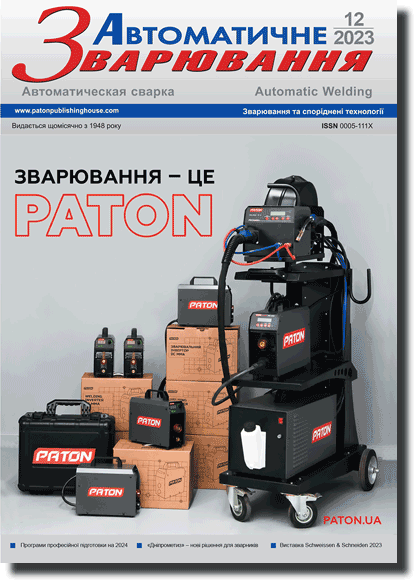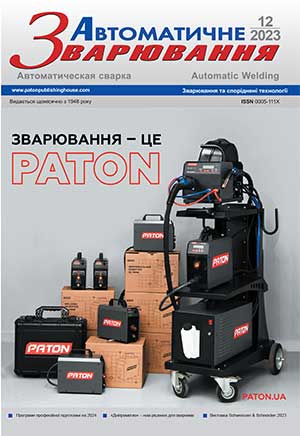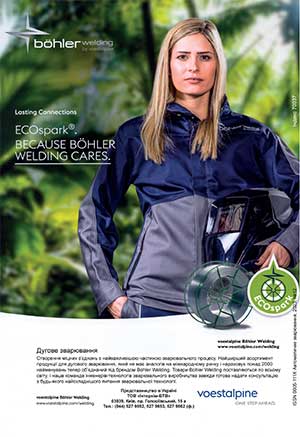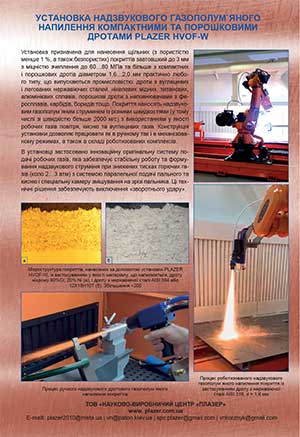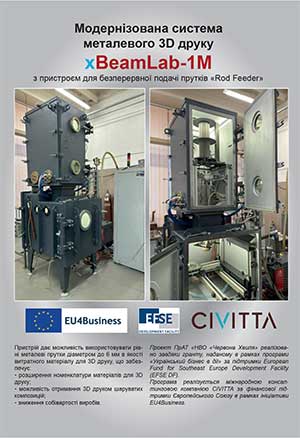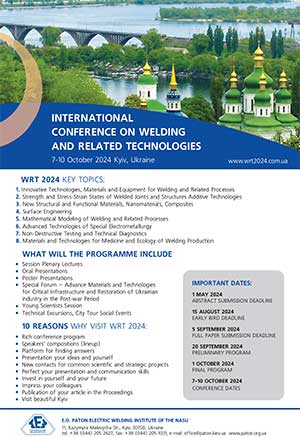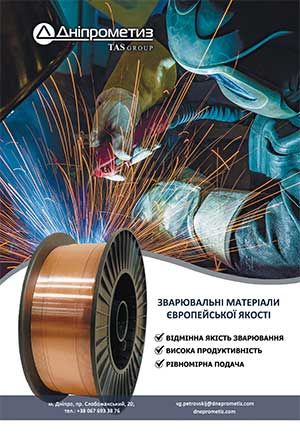| 2023 №12 (01) |
DOI of Article 10.37434/as2023.12.02 |
2023 №12 (03) |
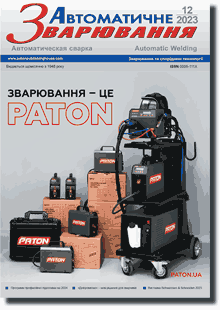
"Avtomatychne Zvaryuvannya" (Automatic Welding), #12, 2023, pp. 13-17
Structure of nickel and iron based abrasion-resistant materials
S.V. Maksymova
E.O. Paton Electric Welding Institute of the NAS of Ukraine. 11 Kazymyr Malevych Str., 03150, Kyiv, Ukraine. E-mail: office@paton.kiev.uaWear-resistant materials containing tungsten carbides are used to improve the performance of various products. This work presents generalized results of investigations on producing wear-resistant layers of abrasion-resistant materials deposited on super hard VK10 material and 30Kh steel. The results of metallographic investigations and local micro-X-Ray spectral analysis to determine the chemical heterogeneity and microstructure of abrasion-resistant materials based on: nickel TeroCoteR 7888 T (Castolin Company); iron Diamax M (Castolin Company; iron – tungsten carbide strip of AN LZ-11-7 grade (Ukraine) in as-delivered condition and after deposition on the base material are given. Chemical composition of individual phases was determined, and it was shown that the main abrasion-resistant phase of these materials (tungsten carbide) is characterized by different morphology and different dimensions. Wear-resistant material of TeroCoteR 7888 T grade (Ni–Cr–Fe–Si) in the form of flexible wire consists (before deposition) of a nickel core, coated by a composite material, containing a large amount of tungsten carbides of a polyhedral shape. The interface of base metal – abrasion-resistant deposited material, which forms during deposition on the base metal, was studied, and it was shown that after deposition the tungsten carbides are chaotically distributed in the nickel matrix, forming a heterogeneous alloy. Ref. 16, Tabl. 4, Fig. 5.
Keywords: microstructure, tungsten carbide, deposited abrasion-resistant material, super hard VK10 material, 30Kh steel
Received: 18.11.2023
References
1. Tarelnyk V.B., Konoplyanchenko E.V., Sarzhanov B.A., Gaponova O.P. (2020) Evaluation of hydroabrasive wear resistance of structural materials with functional coatings formed by resource-saving and ecological technologies. Abstracts of reports of the VII International Scientific and Practical Conference «Actual Problems of Engineering Mechanics», Odesa, Odesa State Academy of Construction and Architecture, Ukraine, 336-340. https://doi.org/10.4028/www.scientific.net/KEM.864.2652. Bartkowski D., Matysiak W. and Wojtko K. (2018) Stellite- 6 surface layers reinforced with hard and refractory WC particles produced on steel for metal forming. IOP Conf. Series: Materials Science and Engineering, 393 012093. https://doi.org/10.1088/1757-899X/393/1/012093
3. Xie Z., Zhang Ch., Wang R., Li D., Zhang Y., Li G., Lu X. (2021) Microstructure and wear resistance of WC/Co-based coating on copper by plasma cladding. Journal of materials research and technology. 15, 821-833. https://doi.org/10.1016/j.jmrt.2021.08.114
4. Linmin Wu, Xingye Guo and Jing Zhang. (2014). Abrasive Resistant Coatings-A Review. Lubricants. 2, 66-89; https://doi.org/10.3390/lubricants2020066
5. Borisova A.L., Kaporik N.I., Tsymbalistaya T.V., Vasilkovskaya M.A. (2019) Diffusion heat-resistant coatings for stainless and carbon steels. Automatic Welding, 10, 28-35. https://doi.org/10.15407/as2019.10.04
6. Yushchenko K. A., Yarovitsin A.V., Chervyakov N.O. (2017) Influence of energy parameters of modes on the tendency to crack formation during microplastic powder surfacing of ZhS32 nickel alloy. Automatic Welding, 2, 3-7. https://doi.org/10.15407/as2017.02.01
7. Ryabtsev I.O., Babinets A.A., Lentyugov I.P. Welding technological properties of flux-cored wire with boron-containing binder in the charge. https://doi.org/10.37434/as2023.09.03
8. Ryabtsev I.A., Senchenkov I.K, and Turyk E.V. (2015) Materials, Technologies, Mathematical Modeling, Silesian Publishing House of Polytechnic Institute, Gliwice. https://doi.org/10.15407/tpwj2015.06.29
9. Khorunov V.F., Maksymova S.V., Stefaniv B.V. (2010) Manufacture of drill bits for production of dispersed methane in mine working. The Paton Welding J., 6, 41-43.
10. Frumin, E. I., Pashchenko, M. A. Zhudra, A. P. (1977) Tape relite for surfacing drill bits. Welding production. 2, 16-18.
11. Materials of the Postalloy company (USA) for surfacing protective coatings. [Electronic resource] http://www.postle. com. Дата доступу 8.08.2023
12. Materials for brazing and surfacing TeroCoteR. [Electronic resource] http://www.castolin.com.ua. Дата доступу 8.08.2023
13. Kudinova, E. V. (2016) Synthesis of ultradisperse modified layers on hard alloys by plasma treatment. Dissertation cand. of Tech. Sci. Degree. Mariupol: PSTU.
14. Maksymova S. V. (2023) Influence of Diffusion Processes on the Structure of Brazed Joints of Titanium Aluminides. Chapt. 2 in the book «Current Topics and Emerging». Issues in Materials Sciences. BP International. 2: 14-29. https://doi.org/10.9734/bpi/cteims/v2/5554A
15. Maksymova S.V., Stefaniv B.V. (2017) Microstructure and chemical heterogeneity of protective coatings. Proceedings of the international scientific conference "Materials for work in extreme conditions", Kyiv, KPI, Ukraine, 163-165.
16. Stefaniv B.V. (2016) Investigation of wear resistance of protective coatings under conditions of hydro abrasive wear. The Paton Welding J., 9, 26-29. https://doi.org/10.15407/tpwj2016.09.05
Advertising in this issue:
The cost of subscription/purchase order journals or individual articles
| Journal/Currency | Annual Set | 1 issue printed |
1 issue |
one article |
| TPWJ/USD | 384 $ | 32 $ | 26 $ | 13 $ |
| TPWJ/EUR | 348 € | 29 € | 24 € | 12 € |
| TPWJ/UAH | 7200 UAH | 600 UAH | 600 UAH | 280 UAH |
| AS/UAH | 1800 UAH | 300 UAH | 300 UAH | 150 UAH |
| AS/USD | 192 $ | 32 $ | 26 $ | 13 $ |
| AS/EUR | 180 € | 30 € | 25 € | 12 € |
| SEM/UAH | 1200 UAH | 300 UAH | 300 UAH | 150 UAH |
| SEM/USD | 128 $ | 32 $ | 26 $ | 13 $ |
| SEM/EUR | 120 € | 30 € | 25 € | 12 € |
| TDNK/UAH | 1200 UAH | 300 UAH | 300 UAH | 150 UAH |
| TDNK/USD | 128 $ | 32 $ | 26 $ | 13 $ |
| TDNK/EUR | 120 € | 30 € | 25 € | 15 € |
AS = «Automatic Welding» - 6 issues per year;
TPWJ = «PATON WELDING JOURNAL» - 12 issues per year;
SEM = «Electrometallurgy Today» - 4 issues per year;
TDNK = «Technical Diagnostics and Non-Destructive Testing» - 4 issues per year.





